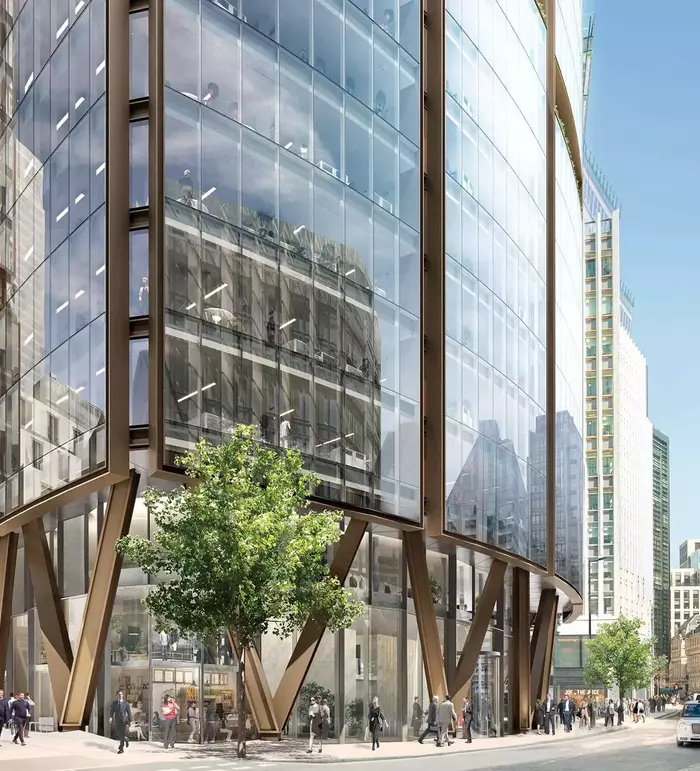When the economy speeds up, companies hire, teams grow, and empty desks disappear. When it slows, moves are paused, deals stretch out, and sublets appear. Office demand is not only about buildings. It is the sum of thousands of hiring decisions, cost choices and commuting patterns that react to the wider economy in real time.
Right now, UK indicators are mixed. Output growth in early 2025 suggests a cautious recovery rather than a surge. Hiring has cooled from the post-pandemic peak as the unemployment-to-vacancy ratio normalises, and this filters through to office demand with a lag of a few quarters. For occupiers, tracking these signals helps you negotiate smarter terms and pick locations that suit today's budgets. If you need quick scale-up options in London, shortlist London office space and consider serviced office space to conserve cash while testing hybrid patterns.
You can also start wider and filter by city from the Flexioffices home page to compare locations and prices that match this market.
Key takeaways
- Office demand economic factors start with GDP and hiring cycles
- Bank Rate shapes lease costs and fit-out financing
- Inflation lifts service charges and occupancy costs
- Hybrid patterns reshape location demand and peak days
- Sector mix and regions create micro-markets
- Match product type to conditions for agility
Growth, hiring and office moves travel together
Economic growth shows up in offices through hiring plans and footprint changes. When firms add people, they sign for more space. When growth slows, excess space is sublet or handed back on expiry. The UK economy expanded through the first half of 2025, which aligns with selective deal-making and steady, rather than frantic, net absorption. The ONS quarterly national accounts provide the baseline many real estate decisions sit.
The labour market shows how quickly growth turns into desks. ONS labour market overviews indicate vacancies easing and unemployment edging higher in 2025. That reduces pressure for rapid expansion and gives tenants more negotiating leverage.
GDP growth and move cycles
Moves usually trail macro data by two to four quarters. If growth holds into late 2025, more requirements should restart in early 2026, especially in sectors tied to domestic demand. If growth fades, expect more short renewals and fitted solutions that avoid long commitments. You can see this logic when browsing office space to rent in London, where fully fitted options make it easier to bridge uncertain headcount.
Vacancy ratios and expansion plans
As the unemployment-to-vacancy ratio rises, job openings are easier to fill, yet expansion is slower and more cautious. That often reduces net new demand and increases churn. In these periods, occupiers gain from shorter terms or options to flex within the same building, which managed office space is designed to support.
Interest rates and the cost of space
Interest rates flow through to office demand in two direct ways. They change the cost of leasing through landlord financing costs and required returns, which influence headline rent expectations and incentives. They also affect tenants' capital expenditure and fit-out financing, which can tip the balance between a conventional lease and an all-inclusive serviced or managed deal.
According to the Bank of England's Bank Rate history, rates peaked in 2023 and eased into 2025, yet remain above the 2010s average. The total cost of occupation is still sensitive to debt and discount rates, so structure matters.
Higher rates reshape lease vs serviced choices
When cash is pricey, deferring capex helps. Serviced offices bundle furniture, connectivity and reception into one monthly licence. This can be more predictable over a 12 to 24-month horizon while preserving optionality if the economy weakens.
Capital expenditure and cash flow sensitivity
Growth plans are riskier when finance costs are high. Managed space lets you design a branded environment without carrying the fit-out on your balance sheet. If you want the differences set out clearly, the guide to serviced, managed and leased offices lists typical inclusions and contract terms.
Inflation squeezes occupation costs and headcount
Inflation filters into service charges, energy, cleaning and security. It also affects wage expectations, which can crowd out real estate budgets. The headline CPI has eased, but services inflation maps more closely to building and labour costs and has stayed stickier than goods. The ONS inflation dashboards are a useful reference when setting assumptions for multi-year budgets.
In this environment, operators that buy power and services at scale can sometimes pass on smaller increases than single tenants can negotiate alone. That is one reason flexible products have held share in 2024 and 2025. If you are exploring outside the capital, the England offices hub helps you compare pricing in regional cities without running separate searches for every location.
Hybrid working and commuting patterns keep shaping location demand
Hybrid working has become a baseline. Higher-skilled occupations are most likely to split time between home and office, which pushes occupiers to sharpen their location strategy. That often means central nodes for client access and culture on peak days, and neighbourhoods closer to talent for convenience and retention. The ONS has tracked the rise of hybrid workers across industries.
Transport data backs this up. TfL's network demand dashboard shows ridership has recovered but remains below 2019 levels on many weekdays. Analysis from the Centre for Cities suggests central London has stabilised around three-quarters of pre-COVID footfall in office-heavy zones.
Central London weekdays vs shoulder days
If your team clusters mid-week, you may not need permanent desks for every employee. Consider a smaller private office plus bookable project rooms, or a managed suite with shared meeting floors. You can test the waters in specific submarkets by reviewing options in London Bridge, where transport and amenity density work well for hybrid teams.
Elizabeth line and east-west demand shifts
New links change catchments. City Hall's research on the Elizabeth line's early years shows significant passenger redistribution, which has improved accessibility across east and west London. If your clients or staff sit along that corridor, areas like Canary Wharf, Paddington and Farringdon can cut commute times and widen your hiring pool. You can compare Canary Wharf to see how buildings near Crossrail price and spec their space.
Sector mix and regional differences across the UK
Office demand is not one market. Financial services, tech, life sciences and government each follow different cycles and have different building requirements. Cities with strong public sector anchors can remain stable even as private hiring softens. Regional university cities can outperform when research funding expands. Towns reliant on a single industry are more cyclical.
If you want London access without West End pricing, Croydon offices and Uxbridge offices often deliver better value per workstation with fast transport links.
Scenarios for 2025 to 2026 and what could move the dial
Base case: GDP grows modestly through 2026, vacancies drift higher then stabilise, and Bank Rate trends down slowly toward the low threes. Net absorption improves slightly, but tenants retain leverage outside top prime. This view lines up with the recent path shown in the ONS GDP releases and a slow easing in labour market pressure.
Upside case: Faster productivity and real income growth lift domestic demand. Hiring re-accelerates in professional services, and demand tightens for fitted floors in the best-connected submarkets. Transport usage pushes higher, which favours central nodes served by the Elizabeth line, as seen in City Hall's Elizabeth line analysis.
Downside case: Inflation proves sticky, rate cuts stall and capex is deferred. Firms extend licences and compress footprints. Availability rises in older stock, while best-in-class, amenity-rich buildings hold up as magnets for peak-day collaboration. Monitoring Bank Rate data helps you time negotiations.
How to respond: practical steps for your next office decision
Start with clarity on headcount, budget and flexibility. In a mixed macro environment, speed and optionality have real value. Three steps help most occupiers plan with confidence and avoid costly mis-timing.
First, pick the right product for your risk profile. If headcount is uncertain, lean on serviced offices to cut capex and stay nimble. If you want your own front door and brand control, managed space gives a custom fit-out with a single monthly bill. For a side-by-side view, the guide to serviced, managed and leased offices maps features to use cases.
Second, exploit timing and data. Track monthly ONS labour market updates and watch TfL demand data around peak days when planning layouts, meeting rooms and lifts. If vacancies rise and rates ease, push for longer rent-free periods, furnished floors or expansion options at today's price.
Third, optimise for hybrid. Choose buildings near multi-line interchanges and strong amenities. For London, that often means locations along the Elizabeth line and Zone 1 to 2 hubs. Shortlist on the London office space page, then compare neighbourhood guides and building specs to ensure the commute and amenities fit your culture.
Conclusion
Office demand rises and falls with the economy, but tenants who read the signals make better calls. Watch GDP and hiring to judge pace, rates to judge cost, and transport to judge where staff will actually show up. Then choose the product that makes the most of this cycle. If you want a fast shortlist that fits your numbers, start with office space in London or explore regional offices across England and move at the speed the market allows.
FAQs
What economic indicators matter most for office demand?
Focus on GDP growth, vacancies, unemployment, inflation and the Bank Rate: these shape hiring, expansion plans and the total cost of occupation. You can monitor these on the ONS website and through the Bank of England's Bank Rate history.
How do interest rates change the best office type for my business?
Higher rates favour low-capex options like serviced or managed offices, since more of the fit-out cost is bundled into one bill. As rates fall and headcount becomes more predictable, longer commitments can become more sensible. You can compare inclusions on the managed office space page.
Is hybrid working reducing overall office demand?
Hybrid has lowered average desk demand per employee, yet it has increased demand for high-quality, well-located space that earns the commute on peak days. Transport and footfall data, alongside ONS surveys, support that shift.
When is the best time to negotiate a lease or licence?
When vacancies are rising and hiring is slowing, incentives improve. Track ONS labour market releases and use that context in your negotiations.
Which London areas benefit most from current transport patterns?
Nodes along the Elizabeth line and multi-line interchanges tend to outperform because they widen the employee catchment. City Hall's research into the line's first years highlights this effect, which can be reviewed in the Elizabeth line data analysis.
















